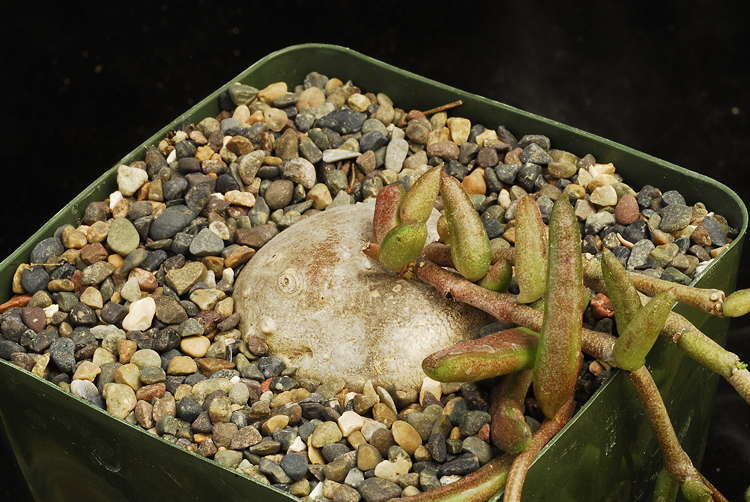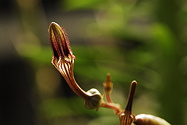The genus Ceropegia, in the strict sense, ranges from Africa through SE Asia to northern Australia. It was published by Linnaeus in 1753 for the Indian species C. candelabrum but the African species C. africana was not published until 1822. Well known in cultivation is C. africana subsp. barklyi, the popular String of Hearts, or Rosary Vine. The subspecies africana, in contrast, has leaves with linear, fleshy, nearly terete leaf blades. It also produces tuberous swellings at the nodes that can eventually become small, spherical, potato-like structures to 2" or more in diameter. These have been recommended for use as grafting stock for difficult-to-maintain stapeliads but we have had limited success with this technique. It is also recommended that tubers should be rooted on their sides so that grafts can be made on top while leaving some of the Ceropegia vines to grow out the side to sustain the stock and scion. The floriferous vines, with small but exotic-looking flowers, can be grown up a trellis or allowed to sprawl from a hanging basket. We offer rooted tubers of HBG 138903, originally collected in September, 1998, by Derek Tribble as tubers growing in deep shade in leaf litter, 10km S of Robertson, W. Cape, S. Africa. $10.

Published in the Cactus and Succulent Journal, Vol. 97 (2), Summer 2025


